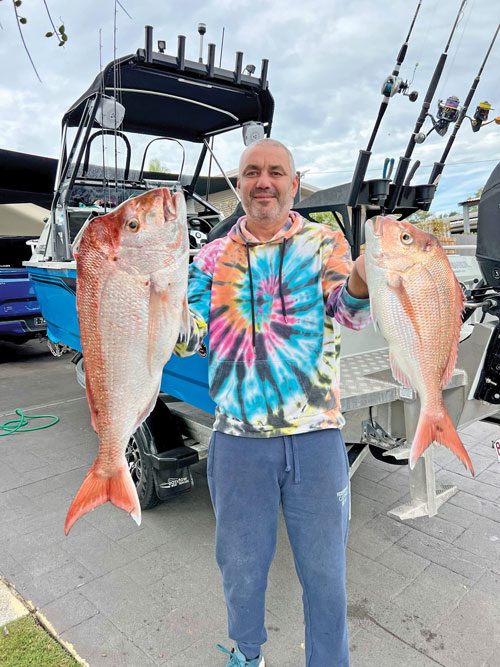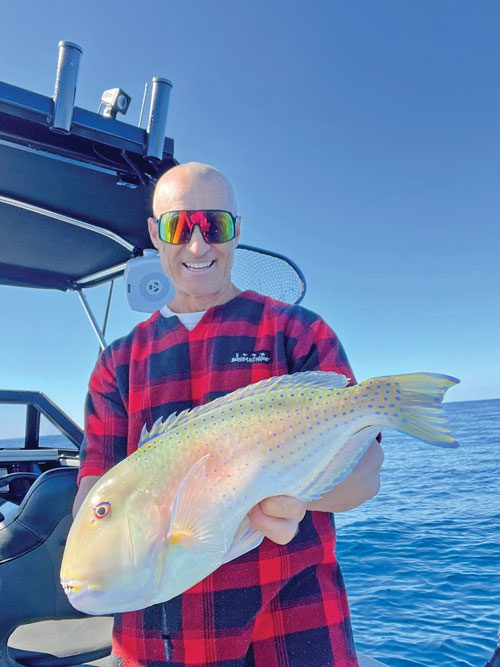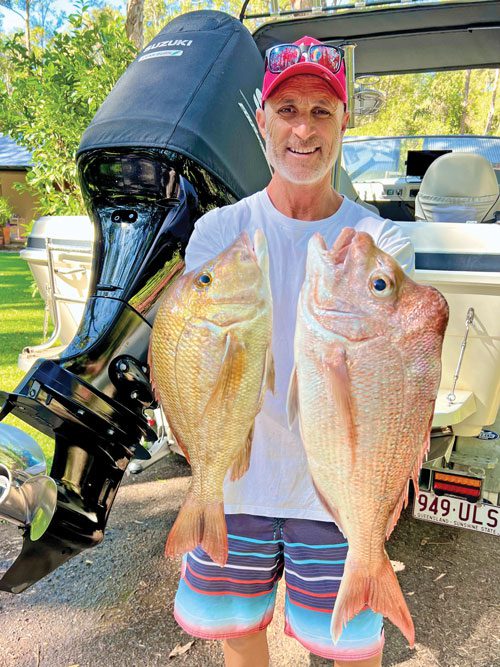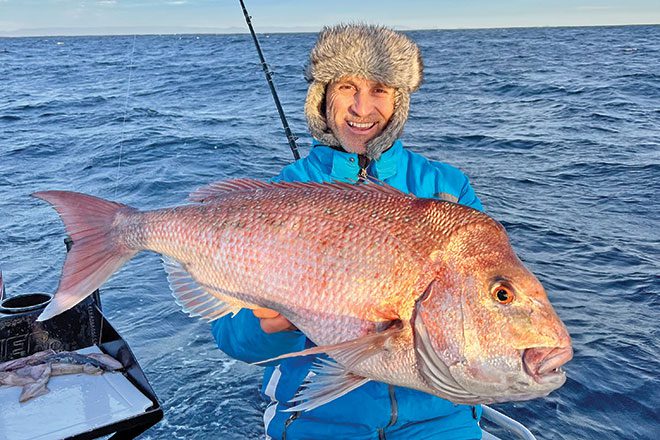These cool mornings test fishos who wake up early and travel out to sea, with freezing air whisking through the boat and finding every little gap in their clothing. fish
On top of that, we have the closed season for snapper and pearl perch in full swing during July and August.
So, I guess there may be a few who would be deciding whether its worth hooking the boat up and heading out for a fish, with these things to consider.
All I can say is that the fishing has never been better and it’s well worth getting out there.
Though the closure is on, there are plenty of other great winter species on offer and it’s an awesome time to test your knowledge and skills by targeting something different to what you’re used to.

How about the good old mulloway – or jewfish, as many of us know it.
There are a few ways of targeting these, but the two best ways are on live bait and big soft vibes.
What works for me is a rod and reel combination of around 10-15kg, with the rod being generally 1.5m long.
I prefer to use PE 3-5 braid with a leader of 50-60lb clear supple monofilament such as Black Magic or Ande.
This can be tied directly to the soft vibe with a loop knot to allow the action of the lure to work at its best.
Big Samaki Vibelicious or Nomad Squidtrex lures work well and smearing them with Squidgies S-Factor or similar will definitely increase your catch rate.
The general idea with vibes is to position your boat almost vertically over the fish you’ve spotted on your sounder and work them with a tea-bagging action directly onto the fish’s head.

If the fish are hungry, they eat it as food and if not, they will probably have a bite out of curiosity or aggression as you work the lure past their face.
Bait fishing is much the same but the most important thing to do is to have a good supply of fresh live bait, and for jewfish, I find nothing works better than yellowtail scad or pike.
Keeping them alive and active is very important, so a good live-bait tank and a pump big enough to re-circulate it with fresh seawater continually is needed.
A tank with an air bubbler will only work for a short period, so you’ll need to keep bucketing in fresh water to keep them from dying.
Bait can be easily caught with a bait jig, and I use a Wilson #8 with a 3-4oz teardrop-style sinker on the bottom.
The heavier sinker allows you to get the jig down into the bait quickly, as well as keeping the baitfish, once hooked, from swimming up around the other hooks and tangling the whole rig up.

Finding them is as easy as using your sounder around the channel markers in the Seaway, or going slightly outside to the known bait grounds such as the Scottish Prince, Aquarius or the rocky patch about 1km southeast of the Seaway.
The bait will show up as a thick yellow or even red cloud-like shape on the sounder.
All of these areas hold good bait and as a result they also hold good jewies.
Once again, keep an eye on the screen and if you see a larger red shape or an arch forming in or around the bait, it’s probably a jewfish.
The north wall of the Seaway is a good option too, but the best place to chase them is the concrete blocks along South Stradbroke Island, a few kilometres north of the Seaway.
You’ll find the GPS marks easily enough online or ask at a local tackle shop.

The same rod and reel combo can be used as for luring but simply change the rig to a pair of snooded 5-7/0 suicide hooks and an 8-10 ball running sinker.
Put the leading hook through the nose of your bait and the trailing hook through its back, just passing it under the skin so it stays upright with the hook point fully exposed.
Then it’s a matter of a controlled drift over the fish you’ve marked up and lowering the bait down into the zone.
It shouldn’t take long for a bite and hopefully a hook-up.
As well as mulloway, plenty of good-sized venus tuskfish have been around and squid bait works very well.
Tuskies have to be one of the best tasting fishing the sea and they are also quite easy to catch.
A simple paternoster or dropper rig is best, and these are reasonably easy to make.
Better yet, Andy from Suncoast Skutes – who also has articles in this publication, see page 74 for this month’s – has them available pre-made, with his special flasher rig hooks attached and ready to tie on.
Visit suncoastskutes.com or Facebook to contact him and to see his range of rigs and hooks.

It is far more convenient and greatly increases the success rate to have the rig prepped and good to go when you’re out in the boat and the bite is hot.
As I said, squid is the preferred bait and good quality frozen is fine but fresh is better.
The Broadwater is producing some great squid fishing at the moment around the Sea World channel, the inside of Crab Island and near the Labrador public jetty and boat ramp, so
grab a few squid jigs and hit these areas at the start of the tide change.
Hopefully snapper and pearl perch get a good break for a few weeks and come back on fire once the closure finishes.
I’m looking forward to getting back into them so I can bring home a good feed for the family, but with plenty of other alternatives on offer, there is always heaps of fin to be had.
Until next month, have an awesome time fishing.
 Bush ‘n Beach Fishing Magazine Location reports & tips for fishing, boating, camping, kayaking, 4WDing in Queensland and Northern NSW
Bush ‘n Beach Fishing Magazine Location reports & tips for fishing, boating, camping, kayaking, 4WDing in Queensland and Northern NSW









